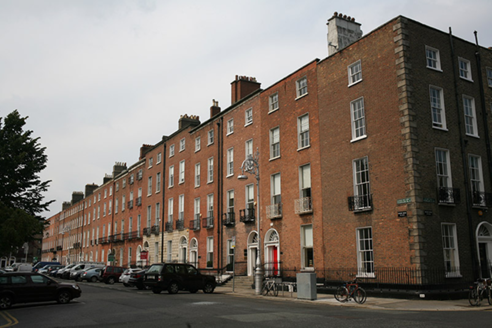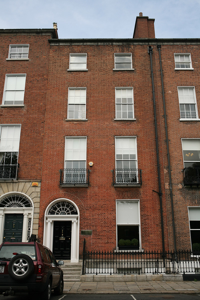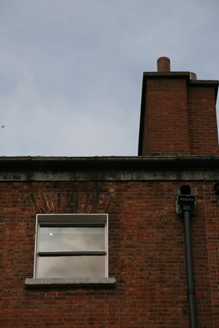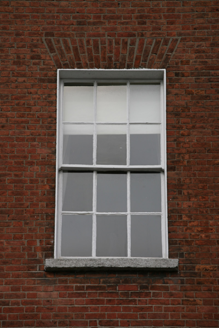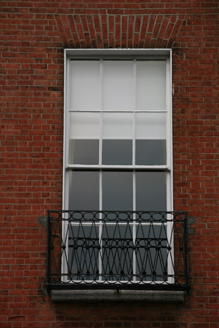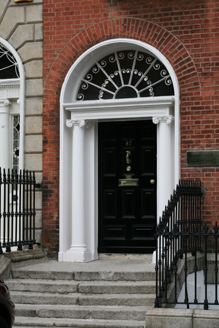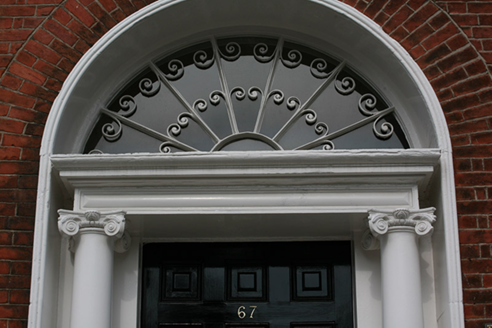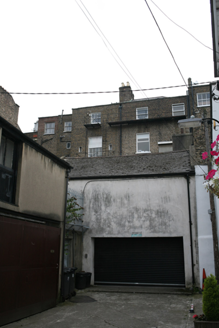Survey Data
Reg No
50930080
Rating
Regional
Categories of Special Interest
Architectural, Artistic
Original Use
House
In Use As
Office
Date
1810 - 1830
Coordinates
316564, 233116
Date Recorded
10/09/2015
Date Updated
--/--/--
Description
Terraced two-bay four-storey over basement former townhouse, built c. 1820 as one of a pair, with a single-storey return over basement to rear (north). Now in use as offices. Double-pile slate roof, hipped to west of rear pitch only and set behind parapet wall with moulded granite coping and frieze, cast-iron hopper and plastic downpipe breaking through to east. Replacement red brick chimneystack to east party wall with clay pots. Red brick walls laid in Flemish bond with cement pointing and granite plinth course over ruled-and-lined rendered basement wall. Gauged brick square-headed window openings with granite sills and timber sash windows; one-over-one to third floor, original six-over-six to first and second floors, early-twentieth century one-over-one sash windows to ground and basement floors with granite surround to basement window. Replacement decorative iron balconettes to first floor. Gauged brick round-headed door opening with masonry Ionic doorcase comprising square-headed door opening flanked by Ionic columns supporting panelled lintel entablature with iron fanlight. Original timber panelled door with eleven raised-and-fielded panels and brass door furniture opening onto granite platform and granite steps to street. Platform and basement enclosed by original decorative wrought- and cast-iron railings set on granite plinth wall. Forming part of a continuous terrace of former townhouses lining north side of Fitzwilliam Square. Possibly original two-storey rendered former coach house to rear on Pembroke Lane, with steel roller-shutter.
Appraisal
A former townhouse, built as a pair with No. 68 (50930079), it retains a wealth of original fabric including the handsome doorcase and some original sash windows. It retains its original external appearance and contributes to the historic character of the square and the wider south Georgian core. Laid out in 1791 by the surveyors J & P Roe, Fitzwilliam Square was the last of the city’s Georgian squares to be completed. Development was staggered and progressed slowly until after the Napoleonic Wars.
